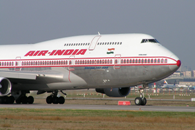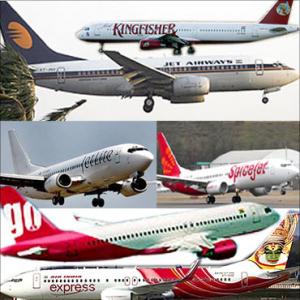 A stern warning from the Directorate General of Civil Aviation proved enough to bring down fares on the country's busiest sector,
A stern warning from the Directorate General of Civil Aviation proved enough to bring down fares on the country's busiest sector,
Delhi-Mumbai. Airlines have slashed peak one-way fares between the two cities -- which were at about Rs 20,000 for two weeks in mid November -- by a third to Rs 7,000.
The average fare on the Delhi-Mumbai route has come down to Rs 6,000, compared with a whopping Rs 15,000 in mid-November, according to an airline executive.
That is still higher than the normal average fare of Rs 4,800 on this route. Average fares are the mean of the minimum price slab and peak fare.
"Fares are back to the earlier level now and very much under control, as demand has eased a bit and flights are not going full," said Sabina Chopra, co-founder of yatra.com, a travel portal which tabulates fares.
Civil Aviation Minister Praful Patel announced in the Rajya Sabha that DGCA has set up an analysis unit to monitor tariffs on a regular basis.
DGCA has also told airlines to furnish established tariffs on a monthly basis and notify it of any significant changes within 24 hours to keep passengers informed of airline pricing patterns.
In mid-November, the Delhi-Mumbai sector saw a 200-300 per cent jump in fares, attributed to a number of factors. The two airports account for almost 70 per cent of all domestic flights. In the same period, airfares across the domestic network were also 15-25 per cent higher in the peak travel season.
While many industry experts say prices rose due to cartelisation by airlines, carriers say that is untrue. "Fares are dynamic and depend on demand and supply.
The steep hike in fares in mid-November cannot be called cartelisation, but comrades-in-arms, where airlines increase fares after seeing that a competitor airline's fares are high," said Rajji Rai, president of the Travel Agents' Federation of India.
However, airlines say the sky-high fares were due to a huge hike in passenger numbers.
"During that two-week period, we saw a passenger load factor on the route at 93 per cent, which we have never seen in many years. This huge passenger number, coupled with fewer flights due to airport constraints led to such a rise in fares," explained an executive with a Delhi-based low-cost carrier.
The main runway at Mumbai airport, which has two runways, is closed for eight hours a day from Monday to Saturday, leading to a massive drop in capacity. With domestic travel growing in double digits post-slowdown, airlines wanted 573 daily slots from the airport, but got only 490.
Nevertheless, passenger groups want better aviation regulation.
"The need of the time is a better aviation regulator than DGCA, so that passengers are not taken for a ride and there are stricter regulations to deal with the airlines on this," said Air Passengers' Association of India President Sudhakara Reddy.








